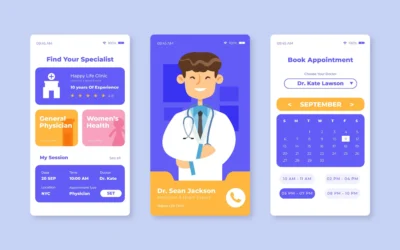The cybersecurity industry is at a critical juncture where user experience (UX) plays a crucial role in building trust and ensuring the usability of complex security solutions. In an age where data breaches and cyber threats are rampant, a poor UX can lead to confusion, mistrust, and even costly mistakes. This blog explores effective UX strategies for cybersecurity companies to ensure that their products are not only robust but also user-friendly and accessible.
Why UX Matters in Cybersecurity
Cybersecurity products are inherently complex, requiring advanced technology to detect and prevent threats. However, the end-users—ranging from IT professionals to everyday employees—need to interact with these tools effectively. A cluttered interface or confusing navigation can overwhelm users and lead to misconfigurations, increasing vulnerability to attacks.By focusing on UX, cybersecurity companies can simplify workflows, improve adoption rates, and foster long-term customer loyalty, while also empowering users with confidence in their product.
Top UX Strategies for Cybersecurity Companies
1. Simplify Complex Interfaces
The primary challenge in cybersecurity UX lies in balancing technical depth with usability. Security dashboards, for instance, often display a lot of data, but overloading users with too much information can create confusion. Use data visualization methods (e.g., charts, heatmaps, and alerts) to present insights intuitively. Prioritize key metrics and ensure that critical actions are easy to find.
2. Focus on Onboarding and Education
Cybersecurity tools are not always intuitive, especially for non-tech-savvy users. A well-structured onboarding process can help customers understand the system’s functionality. Interactive tutorials, in-app guides, and pop-up tips can all enhance the learning curve, ensuring users feel confident in navigating your product.
3. Build Trust Through Transparency
Trust is at the core of any cybersecurity product. Users need to know that their data is safe and the system is working as intended. Create transparent security protocols within your UX, such as showing when automatic updates occur or detailing how threats are mitigated.Additionally, use clear, non-technical language in error messages and alerts to avoid alarming or confusing your users. For example, replace jargon like “malware signature mismatch” with actionable advice like “Your system is updated with the latest security definitions.”
4. Champion Accessibility
Cybersecurity isn’t just for IT experts—it impacts everyone. Incorporating inclusive design practices ensures that your tools are accessible to all users, including those with disabilities. Employ features like adjustable text sizes, screen reader compatibility, and mobile-friendly designs to broaden your audience and build brand inclusivity.
5. Prioritize Seamless User Flows
Whether it’s logging in, setting up two-factor authentication (2FA), or resolving an alert, these processes must be intuitive and frictionless. For example, auto-saving inputs or eliminating redundant verification steps can save users from frustration. Focus on streamlining navigation, reducing cognitive load, and making essential tasks as easy as possible.
The Future of UX in Cybersecurity
As cybersecurity threats evolve, so too must UX strategies. AI-powered personalization, predictive analytics, and behavioral biometrics are emerging technologies that can enhance UX while maintaining robust security. Cybersecurity companies that prioritize user-centered designs will not only stand out in the market but also gain the trust and loyalty of their customers. Conclusion
When done right, UX enhances the efficiency and effectiveness of cybersecurity tools, creating a win-win for companies and end-users alike. By simplifying interfaces, fostering trust, and prioritizing inclusivity, cybersecurity companies can deliver solutions that are both powerful and user-friendly. A great UX isn’t just an option; it’s a necessity for staying ahead in the ever-evolving landscape of digital security.















